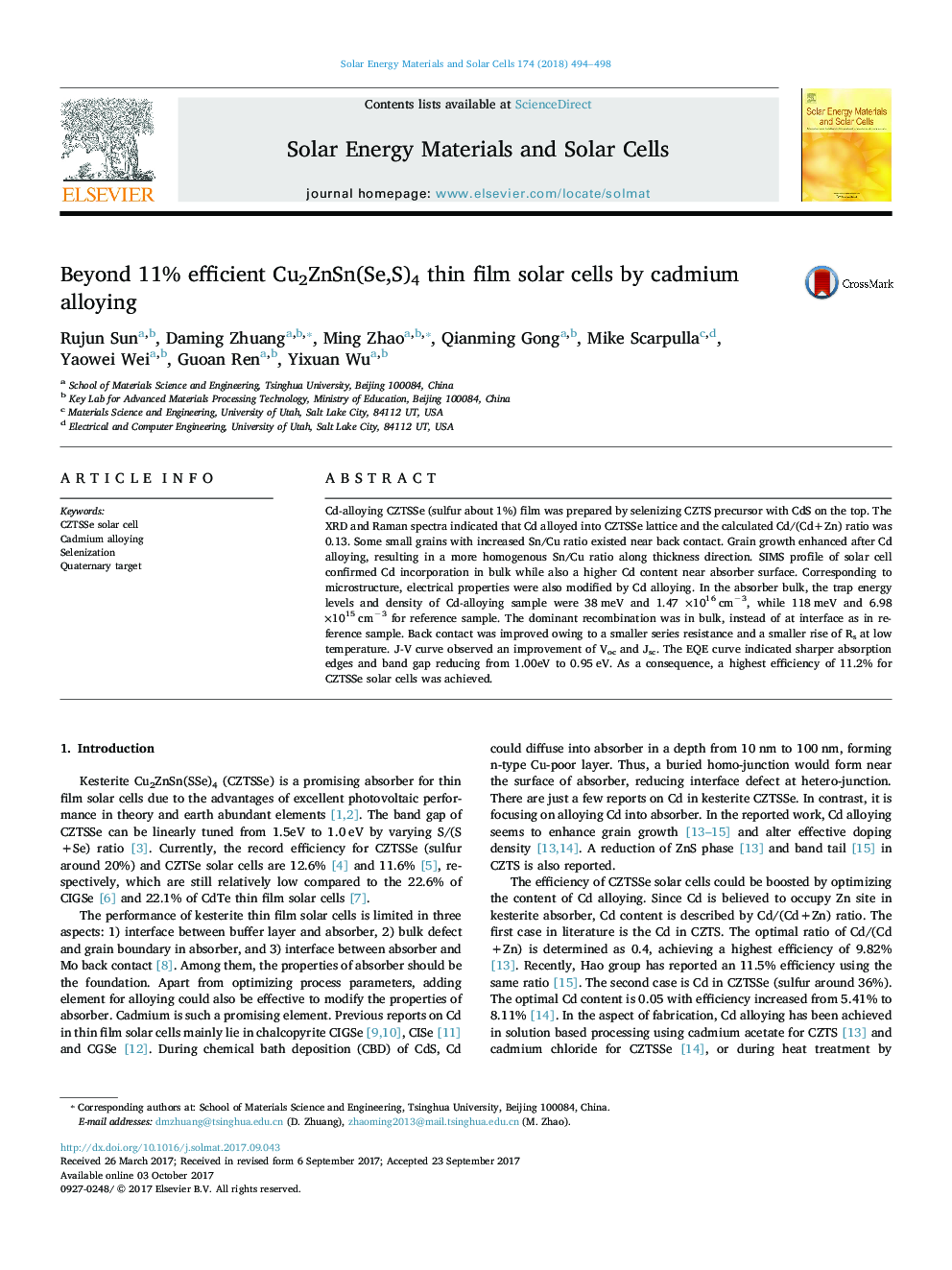| Article ID | Journal | Published Year | Pages | File Type |
|---|---|---|---|---|
| 6456728 | Solar Energy Materials and Solar Cells | 2018 | 5 Pages |
â¢Cd-alloying CZTSSe (sulfur 1%) film was prepared by selenizing CZTS precursor/CdS.â¢Cd alloying affected microstructure, device performance and defects of absorber.â¢A highest efficiency of 11.2% for CZTSSe solar cells was achieved.
Cd-alloying CZTSSe (sulfur about 1%) film was prepared by selenizing CZTS precursor with CdS on the top. The XRD and Raman spectra indicated that Cd alloyed into CZTSSe lattice and the calculated Cd/(Cd+Zn) ratio was 0.13. Some small grains with increased Sn/Cu ratio existed near back contact. Grain growth enhanced after Cd alloying, resulting in a more homogenous Sn/Cu ratio along thickness direction. SIMS profile of solar cell confirmed Cd incorporation in bulk while also a higher Cd content near absorber surface. Corresponding to microstructure, electrical properties were also modified by Cd alloying. In the absorber bulk, the trap energy levels and density of Cd-alloying sample were 38Â meV and 1.47 Ã1016Â cmâ3, while 118Â meV and 6.98 Ã1015Â cmâ3 for reference sample. The dominant recombination was in bulk, instead of at interface as in reference sample. Back contact was improved owing to a smaller series resistance and a smaller rise of Rs at low temperature. J-V curve observed an improvement of Voc and Jsc. The EQE curve indicated sharper absorption edges and band gap reducing from 1.00eV to 0.95Â eV. As a consequence, a highest efficiency of 11.2% for CZTSSe solar cells was achieved.
